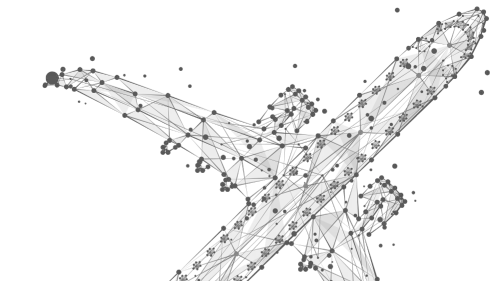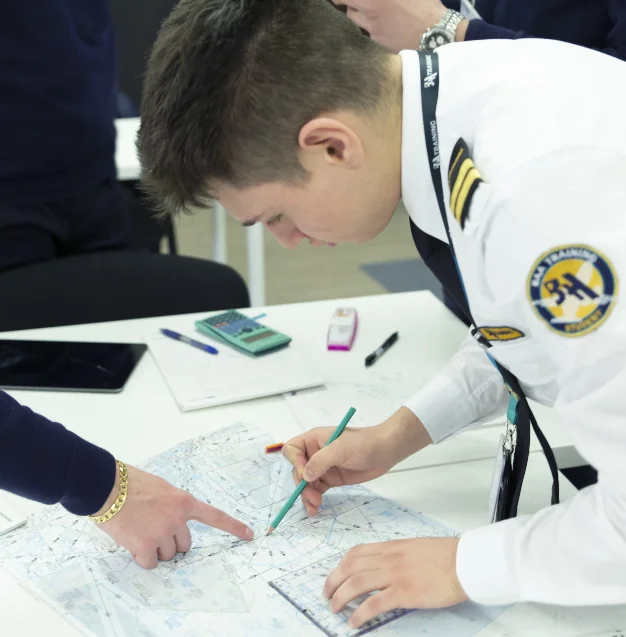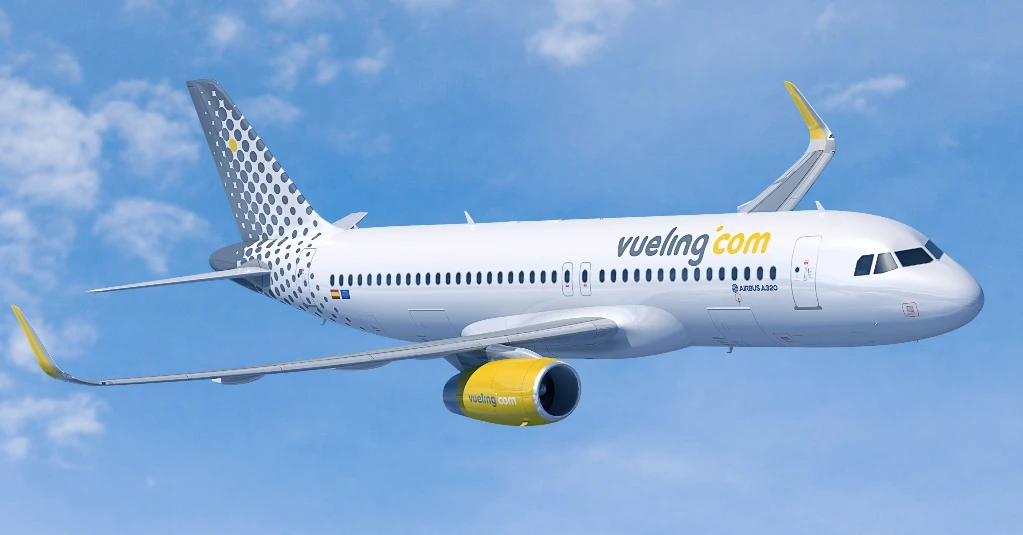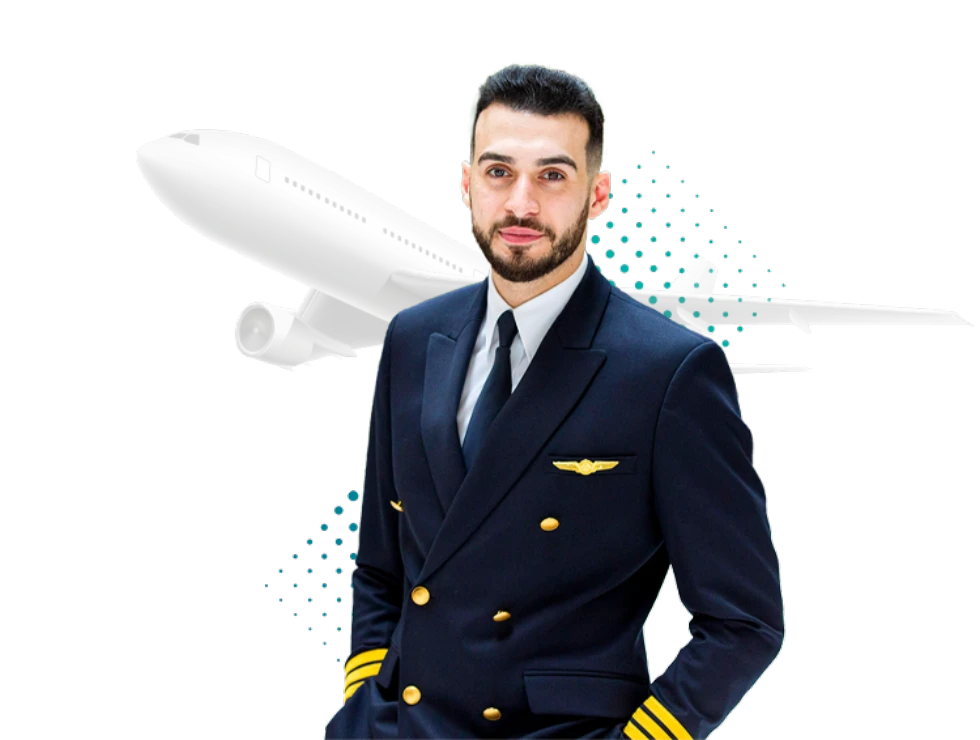
for enrolment
It is a part of the International Airlines Group (IAG), one of the world’s largest airline groups, with a fleet of 650 aircraft.
It won the “Best Low-Cost Airline in Europe 2021” award at the Skytrax World Airline Awards, the world’s largest annual airline passenger satisfaction survey.
Its central hub is at Barcelona El Prat, with 11 more Vueling bases across Spain, France and Italy.
The airline’s fleet comprises over 100 aircraft of the A320 family types.
Facts &
figures about
VUELING AIRLINES
Apply now
AVAILABLE
STUDY OPTIONS:

WHAT IS
Vueling Cadet Program?
The Vueling cadet program is a self-sponsored course designed for cadets with little or no flight experience to prepare them for joining Vueling as First Officers. Upon passing the assessment carried out by BAA Training and an interview with the airline, you will receive a letter of engagement from Vueling. It means the carrier commits to hiring you after you complete the study program successfully.

"We are committed to providing the best training within the BAA Training-Vueling cadet program. Our future pilots will develop technical and non-technical skills while being guaranteed the safety of the air operation by the Vueling company."
Alberto Hernández Guerrero,
Vueling Training Director
TRAINING FEE
Breakdown
FINANCING WITH A LOCAL BANK AVAILABLE
Below, please find the costs of all the training stages and prerequisites to go from zero experience to a pilot authorized to operate A320 and ready to join Vueling.
ATPL INTEGRATED:
PRICE STARTS AT:
GROUND SCHOOL
9500 €
alongside with
FLIGHT SCHOOL
60 500 €
ADVANCED TRAINING:
TYPE RATING
20 000 €
EXTRAS:
PRICE STARTS AT:
INITIAL ASSESSMENT (ONLINE)
380 €
1ST CLASS MEDICAL CHECK
332 €
ACCOMMODATION
REMOTELY
(WORLDWIDE)
1074
Hours
22
months
ATPL
theory
ATPL
exams
HOURS
837
MONTHS
12
It is virtual theory training delivered in real-time by professional instructors that you can complete anywhere, irrespective of your locality. Having finished your ATPL theory, you will have to travel to the CAA to take your final exams.
VFR/NVFR
flight training
HOURS
82
MONTHS
4
Visual Flight Rules (VFR) is a method and set of rules for flying aircraft by reference to the ground. Night visual flight rules (NVFR) are the visual flight rules under which a flight may be performed at night. You will practice on our Cessna 172S aircraft equipped with a full glass cockpit integrated avionics suite.
IFR – FNPT
flight training
HOURS
38
MONTH
1
Instrument Flight Rules training teaches you to fly using the aircraft’s instruments instead of relying on visual cues. You will practice on an FNPT device.
IFR – SEP
flight training
HOURS
59
MONTHS
2
It is the second part of the IFR training. This time you will switch to single-engine piston aircraft to practice the maneuvers.
ME – MEP – FNPT
flight training
HOURS
11 | 3
MONTH
0.5
Multi-engine training teaches the multi-engine plane aerodynamics and other specifics of flying such type of aircraft. It is performed on both a multi-engine piston (MEP) aircraft and an FNPT device.
AUPRT – SEP/VFR
training
HOURS
3
Advanced Upset Prevention and Recovery Training combines theoretical knowledge and flight training and teaches to prevent and recover from airplane upsets, situations in which an airplane unintentionally exceeds the parameters. It is performed on single-engine piston (SEP) aircraft under visual flight rules (VFR).
MCC
theory
HOURS
25
Multi-Crew Cooperation (MCC) course is competency-based training preparing to operate in a multi-pilot environment.
MCC – FTD
flight training
HOURS
16
The flight part of the course is performed on an FTD device. We have additionally integrated Virtual Reality technology to this stage to enhance the training quality.
A320 TYPE RATING
course
BASE
training
MONTHS
2
A320 Type Rating consists of theory and practice on a full flight simulator. The theory includes computer-based training (CBT), theory, and CPT/APT sessions. It also integrates Virtual Reality (VR) technology, allowing pilots to train more often due to the portability of VR goggles. The full flight simulator training takes place at our simulator training center in Barcelona.
Base training involves at least six take-offs and landings to demonstrate your proficiency in operating an aircraft. It occurs at an agreed airport on an A320 and typically lasts one day. Base training is scheduled within two months of completing the FFS stage.
1074
Hours
18
months
ON-SITE(SPAIN)
ATPL theory
(stage 1 - Basic Knowledge)
HOURS
147
MONTHS
2
You will temporarily relocate to Lleida-Alguaire, Spain, for the period of your theory and flight training. You will begin with 9 subjects of the PPL theory, which is the first step for anyone who wants to learn to fly a light aircraft.
VFR/NVFR
flight training
HOURS
82
MONTHS
3
Visual Flight Rules (VFR) is a method and set of rules for flying aircraft by reference to the ground. Night visual flight rules (NVFR) are the visual flight rules under which a flight may be performed at night. You will practice on our Cessna 172S aircraft equipped with a full glass-cockpit integrated avionics suite.
Theory alongside flight training
HOURS
845
MONTHS
11
From this point onwards, the rest of your theory and flight modules will be done simultaneously (e.g., theory in the morning and flight training in the afternoon) so you can immediately start putting your knowledge into practice.
ATPL THEORY
(stage 2 - ATPL level knowledge)
HOURS
690
You will study 13 ATPL subjects and learn everything you need to pass the EASA ATPL exams successfully.
IFR – FNPT
flight training
HOURS
38
Instrument Flight Rules (IFR) flight training teaches you to fly using the aircraft’s instruments instead of relying on visual cues. You will use an FNPT device to master this skill.
IFR – SEP
flight training
HOURS
690
This module teaches flying by relying on the aircraft’s instruments instead of visual cues while using a single-engine piston aircraft.
ME – MEP/FNPT
flight training
HOURS
11 | 3
Multi-engine training teaches the multi-engine plane aerodynamics and other specifics of flying such type of aircraft. It is performed on both a multi-engine piston (MEP) aircraft and an FNPT device.
AUPRT – SEP/VFR
training
HOURS
3
Advanced Upset Prevention and Recovery Training combines theoretical knowledge and flight training and teaches to prevent and recover from airplane upsets, situations in which an airplane unintentionally exceeds the parameters. It is performed on single-engine piston (SEP) aircraft under visual flight rules (VFR).
MCC
theory
HOURS
25
Multi-Crew Cooperation (MCC) course is competency-based training preparing to operate in a multi-pilot environment.
MCC – FTD
flight training
HOURS
16
The flight part of the course is performed on an FTD device. We have additionally integrated Virtual Reality technology to this stage to enhance the training quality.
A320 TYPE RATING
course
BASE
training
MONTHS
2
A320 Type Rating consists of theory and practice on a full flight simulator. The theory includes computer-based training (CBT), theory, and CPT/APT sessions. It also integrates Virtual Reality (VR) technology, allowing pilots to train more often due to the portability of VR goggles. The full flight simulator training takes place at our simulator training center in Barcelona.
Base training involves at least six take-offs and landings to demonstrate your proficiency in operating an aircraft. It occurs at an agreed airport on an A320 and typically lasts one day. Base training is scheduled within two months of completing the FFS stage.
EXPLORE OUR
training locations!

Ground school:
Lleida-Alguaire or ONLINE
It is a theoretical part of your training that you can complete in Lleida-Alguaire, Spain, or online via a dedicated virtual classroom.
The ground school in Spain is in our flight base in Lleida-Alguaire, making it convenient for students to complete theory and flight training in the same spot.
The virtual classroom (online) training stands for the excellent quality EASA training that you can do from anywhere in the world, avoiding traveling and living abroad expenses.

Flight school:
Lleida-Alguaire
Our main flight base is in Spain, at Lleida-Alguaire International Airport. It is a convenient location with developed infrastructure and a suitable climate for training all year round.
You can also complete your theory training in Lleida-Alguaire to align it with your flight training.
You will practice on Cessna 172 Skyhawk and Tecnam types of aircraft and an FNPT II device.
Type Rating:
Barcelona
You will get your Type Rating at our simulator training center in Barcelona, Spain.
The training center in Barcelona is equipped with A320ceo, A320ceo/neo, B737 MAX FFS, A320 FTD Level 2, B737 MAX FTD Level 2, and VR kits.
The facility features modern classrooms, briefing rooms, a spacious rest lounge, and a dining room.
GOT QUESTIONS?
Get answersOur
INSTRUCTORS:
in addition to instructing, work as airline pilots/ATC controllers/Line training captains/TRIs, or TREs.
will help you gain multicultural experience as they come from a variety of countries, such as France, Greece, Germany, Netherlands, Switzerland, Spain, etc.
hold at least a Bachelor’s or Master’s degree in the respective fields or even are scientists in engineering or economics holding a Ph.D.
APPLICATION
process
Contact us
Please fill out the form, and we will assign you a personal manager at BAA Training. The manager will take you through the entire selection process.
Document screening
Candidate assessment
ENTRY
requirements
Age
Over 18 years old
Education
Secondary or higher
Right to live & work in the EU
Treated equally with EU nationals
Physical status
Valid EASA 1st Class Medical Certificate
Personal competence and aptitude
Completion of special tests and interviews developed by the selection committee of BAA Training is necessary.
Theoretical preparation
Knowledge of Mathematics, and Physics is of key importance
FAQs
Vueling
Cadet Program
Where will l live during my training course?
BAA Training will share with you all the necessary information about the most convenient places/areas you can stay during your course.
STUDENTS' LIFE
at a Glance





















